What's New
Displaying results 1991 - 2000 of 4052
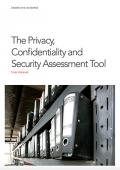
Resource | Tools,
Based on privacy, confidentiality and security principles an Assessment Tool was developed to assess in country the extent that the confidentiality and security of personal health information is protected at facility and data warehouse/repository levels and whether national guidelines exist including privacy laws. A Manual on the use of the Assessment Tool has been produced and is available below. A Working document, based on the Assessment Tool has been developed that can be downloaded and used to perform the actual assessments.
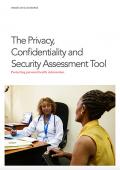
Resource | Tools,
This assessment tool comprises three modules that provide health-care professionals with a set of standardized questions that will enable them to gather country-based information to assess whether the privacy, confidentiality and security of personal health information are protected throughout the service delivery and data management settings in a particular country.
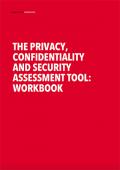
Resource | Tools,
The Assessment Tool gathers the information required to assess the extent to which the confidentiality and security of identifiable and de-identified personal health information are protected.This publication is a workbook that relevant professionals can download and perform their assessment with.
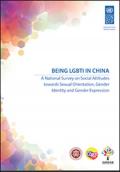
Resource | Publications,
The survey reflects the life experiences of lesbian, gay, bisexual, transgender, intersex (LGBTI) people, and people with other non-conforming sexual orientation, gender identities and expressions, in regards to the legal environment, education, employment, family, access to health service, mental health, media, social services, faith and other areas, especially in terms of discrimination and unfair treatment suffered by sexual and gender minorities as well as social attitudes towards them.
This survey aims to provide baseline information for government bodies, international institutions, education sector, corporate and non-profit organizations, etc., and promote the adoption of anti-discrimination and protective laws and policies for China’s sexual and gender minorities.
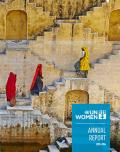
Resource | Publications,
The Annual Report documents UN Women’s work to foster women’s empowerment and gender equality around the world. It highlights some of the organization’s initiatives during the year and provides summary financial statements, a list of new programmes and projects, and contact information.
2015 was UN Women’s fifth year. As we marked this milestone, UN Member States agreed on the 2030 Agenda for Sustainable Development which recognizes the transformative power of women and girls. Our work around the world contributes to turning the promise of the Sustainable Development Goals into reality. Working with our diverse partners, we deliver results, from advancing norms and standards, to expanding women’s leadership and participation, bolstering women’s economic empowerment, and ending violence against women and girls.
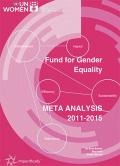
Resource | Publications,
The primary objective of the meta analysis was to extract, analyse and communicate evidence from high-quality evaluation reports in order to support the FGE to develop constructive lessons for future systematic strengthening of programming, organizational effectiveness and the evaluation function. The meta analysis also provides evidence-based information and insights about what works for whom in regards to women’s political and economic empowerment and the processes and approach of the FGE. Apart from an important internal learning and accountability tool for UN Women, its donors and grantees, the report intends to be of use to women’s rights funders, civil society organizations and development practitioners.
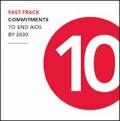
Resource | Tools,
The Fast-Track Commitments are drawn from the 2016 United Nations Political Declaration on Ending AIDS, which was adopted by United Nations Member States at the 2016 United Nations General Assembly High-Level Meeting on Ending AIDS and the UNAIDS 2016–2021 Strategy.

Resource | Publications,
For more than 2 decades, Malaysia has many success stories about its struggle to halt and reverse the HIV epidemic. Dated as far back in 1985, the earliest response started with the establishment of the country’s National Task Force before the first case made its debut. Backed by strong political support, workable policy, undivided participation and perseverance (4P), the country witnessed countless new policy turned into action; all geared towards preventing and controlling the menace. By 2015, for the first time in history, Malaysia has successfully halved the new infections in 2000 (22 per 100,000 population).

Resource | Publications,
The Youth Global Programme for Sustainable Development and Peace (“Youth-GPS,” 2016-2020) is UNDP’s first global programmatic offer for youth empowerment for sustainable development and peace.
The project aims to systematically foster youth empowerment where UNDP has a presence by significantly boosting the implementation of UNDP's Youth Strategy 2014-2017 (itself aligned with UNDP’s Strategic Plan 2014-2017) and to sharpen the organization’s focus and corporate response to the challenges young people face worldwide across three priority thematic areas: enhanced youth civic engagement and participation in decision making and political processes and institutions; increased economic empowerment of youth; and strengthened youth engagement in resilience- and peace-building.
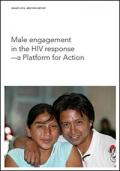
Resource | Publications,
The meeting reviewed the latest evidence on the HIV epidemic among men and adolescent boys, their access to and use of HIV services, the responsiveness of health systems to their needs and the role of harmful gender norms in driving the HIV epidemic among men, women, and adolescent boys and girls.
It also examined promising approaches for challenging harmful gender norms that heighten HIV risks among men and women, and discussed best practices that can enhance access to and use of HIV and other health services among men.





